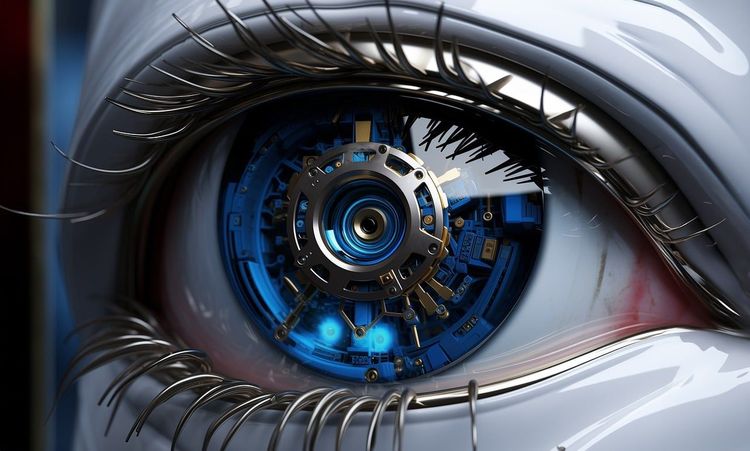Just a few days ago, OpenAI unveiled its latest generative model, o1. Promoted as a "reasoning" model, o1 processes questions more thoughtfully before providing answers, breaking down problems and verifying its responses.
While o1 has limitations that OpenAI openly acknowledges, it shines in areas like physics and mathematics, even though it doesn't necessarily have more parameters than its predecessor, GPT-4o. In AI and machine learning, "parameters"—often numbering in the billions—are indicators of a model’s problem-solving capabilities.
This development raises important issues regarding AI regulation. For instance, California's proposed bill, SB 1047, sets safety criteria for AI models that cost over $100 million to develop or use significant computational power during training. However, o1's performance shows that enhancing a model's capabilities isn't solely dependent on increasing training resources.
In a recent post on X, Nvidia research manager Jim Fan suggested that forthcoming AI systems might depend on smaller, easily trained "reasoning cores" rather than the resource-intensive architectures that have dominated the industry recently, such as Meta's Llama 405B. Fan cites recent academic research indicating that smaller models like o1 can outperform larger models when given sufficient time to analyze questions.
According to Sara Hooker, head of research at AI startup Cohere, it's shortsighted for policymakers to link AI regulatory measures solely to computational power.
“[o1] highlights the limitations of using model size as a risk proxy. It ignores the full potential of inference and model execution. This perspective reflects poor science and policies that focus not just on current risks but also on potential future dangers.”
Does this mean lawmakers should overhaul AI legislation from the ground up? Not necessarily. Many existing bills were crafted to be adaptable, anticipating that AI would advance significantly after their enactment. For instance, California's legislation allows its Government Operations Agency to adjust the computational thresholds that trigger safety measures.
The challenge lies in identifying a more accurate risk indicator than training compute. Like many other facets of AI regulation, it's a critical consideration as legislation progresses in the U.S. and globally.
News
- Reactions to o1: Max gathered initial feedback from AI researchers, startup founders, and venture capitalists about o1 and tested the model personally.
- Altman resignation from safety committee: OpenAI CEO Sam Altman stepped down from the committee responsible for evaluating the safety of models like o1, likely due to concerns regarding impartiality.
- Slack evolves into an agent hub: At Salesforce's annual Dreamforce conference, Slack introduced new features like AI-generated meeting summaries and integrations for image creation and AI-driven web searches.
- Google labels AI-generated images: Google announced plans to enhance Google Search, identifying which images are AI-generated or modified by AI tools.
- Mistral offers a free tier: French AI startup Mistral has launched a new free tier, allowing developers to fine-tune and build test applications with its AI models.
- Snap introduces a video generator: At its annual Snap Partner Summit, Snapchat unveiled a new AI video-generation tool for creators, enabling selected users to generate videos from text prompts and soon from image prompts.
- Intel secures significant chip deal: Intel has partnered with AWS to co-develop an AI chip using Intel’s 18A fabrication process, describing the partnership as a multi-year, multi-billion-dollar framework that might encompass additional chip designs.
- Oprah's special on AI: Oprah Winfrey recently aired a special on AI featuring prominent guests, including OpenAI’s Sam Altman, Microsoft’s Bill Gates, tech influencer Marques Brownlee, and FBI Director Christopher Wray.
Research Paper of the Week
We understand AI’s ability to persuade, but can it help someone trapped in conspiracy theories? While it can't do this alone, a new model from Costello et al. at MIT and Cornell shows promise in challenging false beliefs about conspiracies that can persist for months.
In their study, individuals who subscribed to conspiracy theories (e.g., “9/11 was an inside job”) interacted with a chatbot that consistently provided counter-evidence. As a result, participants reported a 20% decrease in belief in these statements two months later. Here’s a snapshot of one such conversation:
Although those deeply entrenched in conspiracy ideologies may not trust AI intervention, the approach could be more effective at pivotal moments, such as when a young person first encounters these topics. For example, if a teenager searches, “Can jet fuel melt steel beams?” they might experience a moment of learning instead of falling deeper into misinformation.
Model of the Week
While it's not a specific model, it relates to them: Microsoft researchers recently published an AI benchmark called Eureka, designed to enhance model evaluations in an open and transparent way.
With AI benchmarks plentiful, what distinguishes Eureka? The researchers emphasize that Eureka is a compilation of existing benchmarks featuring tasks that pose significant challenges, even for the most advanced models. Eureka assesses abilities often overlooked by other benchmarks, such as visual-spatial navigation skills.
To illustrate Eureka's difficulty, the researchers tested various systems, including Anthropic’s Claude, OpenAI’s GPT-4o, and Meta’s Llama. No single model excelled across all of Eureka’s assessments, underscoring the necessity for continued innovation and targeted advancements in AI.
Grab Bag
In a significant win for professional actors, California has passed two laws, AB 2602 and AB 1836, that limit the use of AI-generated digital replicas.
These laws, supported by SAG-AFTRA, the performers' union, require companies using a performer's digital likeness (like a cloned voice or image) to provide a clear description of the intended use and negotiate with the performer’s legal representatives or union. Additionally, the laws mandate that entertainment employers obtain consent from a deceased performer’s estate before using their digital likeness.
According to coverage from the Hollywood Reporter, these bills formalize protections that SAG-AFTRA advocated for during its extensive strike with studios and streaming platforms last year. With California joining Tennessee in regulating the use of digital replicas of actors, this development reflects a growing trend in the industry.







